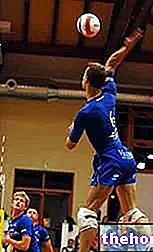Edited by Dr. Gian Marco Azzolini
Before 1980, chronic heart failure was treated only with rest and medication to reduce the stress on the diseased cardiovascular system; after much testing and research, clinicians have re-evaluated the role of regular exercise in patients with heart disease.
Now it is clear that physical activity improves many factors in heart disease patients: muscle function, increases the sub-maximal capacity to perform efforts, decreases peripheral resistance at the level of blood vessels, increases the peak of oxygen absorption, increases the peak of power expression, improves resting heartbeats and ventilatory threshold as well as decreases the feeling of fatigue.
Due to an irregular heartbeat, the appropriate heart rate "range" must always be considered during training: this is calculated using the Karvonen formula:
[(220-age-HR at rest) x% intensity of work] + HR at rest;
(HR = heart rate) HR should be lower than in healthy subjects (50-55%) or between 40-60% of the peak VO2max (maximum oxygen uptake).
Patients with chronic heart failure need a gradual approach to training, with a good warm-up that allows for vasodilation before an effort is required.They can gradually increase physical activity by increasing the duration of the exercises and after a long period of training they can also have an autonomous program of exercises to be carried out even at home.
The "resistance training" with low overloads and a high number of repetitions prevents excessive tension and apnea (typical of strength training) which would be harmful because it would greatly increase the demands of the heart.
Each type of gain in the ability to perform exercises is accompanied by an improvement in the symptomatic state and in the quality of life of the person with heart disease.




























